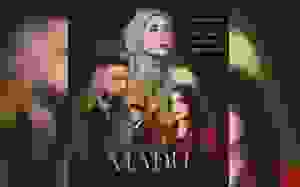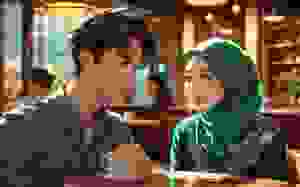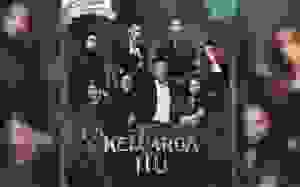The Mirror And The Megaphone What The Media Industry Tells Us About Ourselves

IMAGINE standing in front of a mirror that not only reflects your image, but also echoes your voice to millions. That’s what the media has become today a mirror of society and a megaphone for voices, ideas, and, sometimes, manipulation.
Once limited to radio shows and printed headlines, the media industry has now evolved into an ever-expanding universe of tweets, TikToks, podcasts, and 24/7 news cycles.
But as this universe grows, we’re left with important questions: Who holds the mirror? Who controls the megaphone? And are we seeing the truth or just a reflection of what someone wants us to see?
The media industry today is more powerful than ever. Through a mix of traditional formats like television, radio, and newspapers and modern platforms such as Instagram, YouTube, and online blogs, media reaches billions daily.
Whether it’s breaking news or a viral dance challenge, content spreads faster than we can blink. With that speed comes influence over how we think, what we buy, and who we trust.
But the power of media is a double-edged sword. On one hand, it gives voice to the voiceless, sheds light on injustice and connects people across borders. On the other, it can distort facts, spread misinformation, and create echo chambers that trap us in one-sided views.
The rise of digital media has made everyone a potential journalist, yet not everyone follows journalistic ethics. One viral falsehood can destroy reputations or sway entire elections.
Behind the glossy screens and fast-scrolling feeds are companies giant tech firms and media conglomerates pulling the strings. Meta, Google, and even lesser-known algorithm-driven news curators have the power to decide what you see and what you don’t.
That’s not always a conspiracy it’s often just business. Their goal is engagement, and outrage engages. Emotional headlines, shocking visuals, and controversial opinions get more clicks than calm, balanced reporting.
The real danger? We might not even notice we’re being influenced. When our feed agrees with us, we assume it’s truth. When we share a meme, we don’t always stop to fact-check. The media doesn’t always tell us what to think, but it does a brilliant job of telling us what to think about.
Yet, in this landscape of noise and narratives, there’s hope. A new wave of digital literacy is rising. More people are learning to question sources, cross-check facts, and explore alternative viewpoints.
Movements like citizen journalism, podcasts by young creators, and independent media collectives are reclaiming the media space. These voices may be smaller, but they are often more authentic, raw, and brave.
In Malaysia, where media freedom is still evolving, the balance between regulation and censorship is delicate. On one hand, regulation can protect the public from hate speech or fake news.
On the other, too much control can silence dissent. The challenge lies in creating a media environment that is both free and fair. Laws should empower the truth, not shield those in power from accountability.
So, where do we go from here? Perhaps the answer lies in recognising the role we play. We are not just passive consumers of media we are participants, creators, and amplifiers.
Every share, like, or comment is a vote. Every story we believe without question, every post we spread without reading, shapes the larger media narrative.
If media is the mirror and the megaphone, then we must become more mindful of what we reflect and what we shout.
We must demand more transparency from platforms, support ethical journalism, and educate the next generation not just on how to use media, but how to think in a media-saturated world.
Because the media industry isn’t just about technology or profit. It’s about people telling stories, sharing truths, and shaping the future.
Whether that future is informed, inclusive, and empowering, or divisive, distorted, and dangerous… depends on how we choose to listen, and how we choose to speak.
The author, Syarfa Akila Matta is an undergraduate student of Universiti Malaya, taking an elective university course entitled “Introduction to Journalism and Storytelling in Digital Age”.
The views expressed are solely of the author and do not necessarily reflect those of MMKtT.
- Focus Malaysia.
Artikel ini hanyalah simpanan cache dari url asal penulis yang berkebarangkalian sudah terlalu lama atau sudah dibuang :
http://malaysiansmustknowthetruth.blogspot.com/2025/08/the-mirror-and-megaphone-what-media.html
 PING BABAB : Raksasa Aggregator Malaysia
PING BABAB : Raksasa Aggregator Malaysia

























